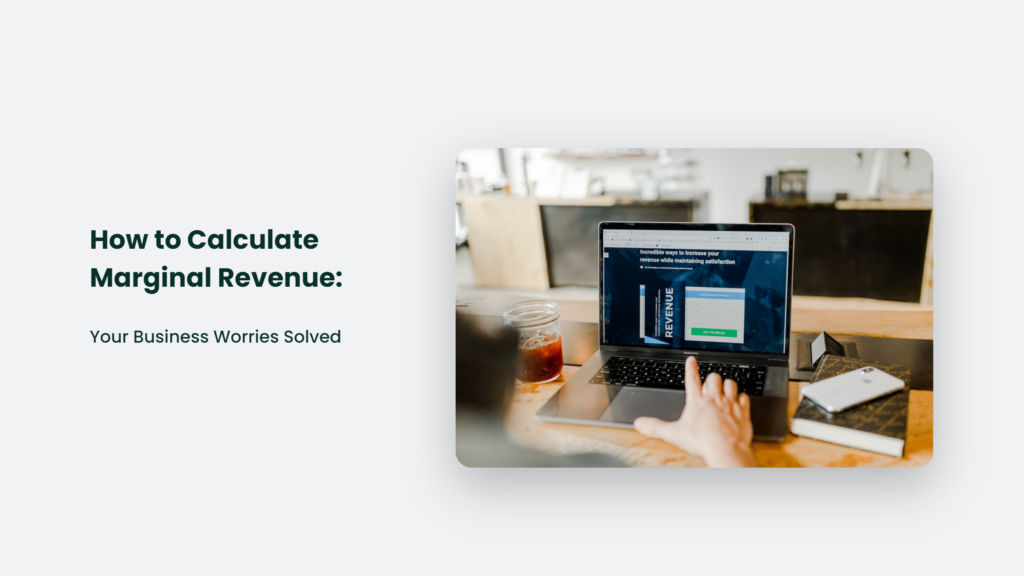
How to Calculate Marginal Revenue: Your Business Worries Solved
As Seen On
Do you ever find yourself lying awake at night, wondering how to calculate marginal revenue for your business? No? Well, maybe you should! Understanding marginal revenue is crucial for making informed decisions about pricing, production, and maximizing profits. So, buckle up and get ready for an engaging and in-depth exploration of this essential economic concept.

The Basics of Marginal Revenue
Marginal revenue is the additional revenue generated by selling one more unit of a product or service. In other words, it’s the extra cash you make when you How to Calculate Marginal Revenue:
Calculating marginal revenue is relatively simple. The formula is: To calculate marginal revenue, you need to consider the total change in revenue and divide it by the change in the number of units sold. Let’s say you own a bakery, and you sell 100 loaves of bread for a total of $500. If you sell an additional loaf for $5, your marginal revenue for that 101st loaf is $5. Now, let’s say you sell a total of 110 loaves for $550. The marginal revenue for loaves 101 through 110 is $50 ($550 – $500), or $5 per loaf. Marginal revenue is a powerful tool for businesses, as it can help you understand consumer demand, plan production schedules, set product prices, predict consumer behaviour, and produce goods in accordance with forecasted demand. Let’s delve deeper into each of these aspects: By analyzing historical marginal revenue data, businesses can gauge customer demand for products in the market. This information is crucial for making informed decisions about product offerings and pricing strategies. Marginal revenue helps businesses determine the optimal production level to meet consumer demand. This information can be used to create efficient production schedules that minimize waste and maximize profits. Marginal revenue plays a significant role in setting product prices. By understanding the relationship between marginal revenue and product pricing, businesses can find the optimal price point that maximizes profits while maintaining customer demand. Marginal revenue can be used to predict how consumers will react to changes in product prices. This information can help businesses make strategic decisions about pricing, promotions, and product offerings to attract and retain customers. By analyzing marginal revenue data, businesses can better understand market demand and adjust their production levels accordingly. This ensures that they produce the right amount of goods to meet consumer demand without overproducing or underproducing. Marginal revenue and marginal cost are both essential concepts in microeconomics. When marginal revenue equals marginal cost, a business has reached its profit-maximizing production level. Yes, marginal revenue can be negative. This occurs when the additional cost of producing and selling one more unit is greater than the revenue generated from that unit. Marginal revenue is important because it helps businesses determine the optimal production level and pricing strategy to maximize profits. It also assists in understanding consumer demand and planning production schedules. Calculating marginal revenue is a crucial skill for any business owner or manager. By understanding this concept, you can make informed decisions about pricing, production, and maximizing profits. So, the next time you find yourself pondering the mysteries of marginal revenue, remember this article and rest easy knowing you’ve got it covered.
A Real-World Example
The Power of Marginal Revenue: Unlocking Business Potential
Understand consumer demand:
Plan production schedules:
Set product prices:
Predict consumer behaviour:
Produce goods in accordance with forecasted demand:
Frequently Asked Questions:
How is marginal revenue related to marginal cost?
Can marginal revenue be negative?
Why is marginal revenue important?
In Conclusion
Gracie Jones
Up until working with Casey, we had only had poor to mediocre experiences outsourcing work to agencies. Casey & the team at CJ&CO are the exception to the rule.
Communication was beyond great, his understanding of our vision was phenomenal, and instead of needing babysitting like the other agencies we worked with, he was not only completely dependable but also gave us sound suggestions on how to get better results, at the risk of us not needing him for the initial job we requested (absolute gem).
This has truly been the first time we worked with someone outside of our business that quickly grasped our vision, and that I could completely forget about and would still deliver above expectations.
I honestly can’t wait to work in many more projects together!
Disclaimer
*The information this blog provides is for general informational purposes only and is not intended as financial or professional advice. The information may not reflect current developments and may be changed or updated without notice. Any opinions expressed on this blog are the author’s own and do not necessarily reflect the views of the author’s employer or any other organization. You should not act or rely on any information contained in this blog without first seeking the advice of a professional. No representation or warranty, express or implied, is made as to the accuracy or completeness of the information contained in this blog. The author and affiliated parties assume no liability for any errors or omissions.

